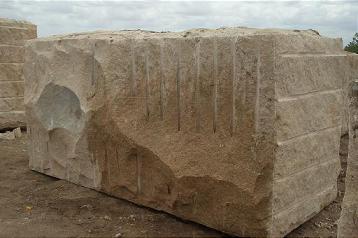Why Granite
Granite Types
Click to view large - You can also drag and open more than one at a time for comparison.
Products made from granite will not depreciate with time and will continuously add value to any property where they are installed. Unlike synthetics, granite presents a surface depth that seems almost three-dimensional. It has a luminance that’s absent from other surfaces. Regardless of its finish, granite creates an immediate impression of elegance, and is considered a definite plus on any real estate broker’s checklist.
Granite is sold both in tiles and slabs, and is frequently used not only for kitchen countertops, bar tops, and vanities, but also for walls, floors, fireplace surrounds, windowsills, and even building fascia. Its unique variations in color and veining turns make each specimen a natural work of art. It is cool to the touch, and presents an image of classic grace and beauty.
What is Granite?
 Granite
is a common and widely-occurring group of intrusive felsic igneous rocks that form at
great depths and pressures under continents. Granite consists of orthoclase and plagioclase
feldspars, quartz, hornblende, biotite, muscovite and minor accessory minerals such as
magnetite, garnet, zircon and apatite. Rarely, a pyroxene is present. Ordinary granite
always carries a small amount of plagioclase, but when this is absent the rock is referred
to as alkali granite. An increasing proportion of plagioclase feldspar causes granite
to pass into granodiorite. A rock consisting of equal proportions of orthoclase and plagioclase
plus quartz may be considered a quartz monzonite. A granite containing both muscovite
and biotite micas is called a binary granite. The average density is 2.75 g/cm3 with
a range of 1.74 to 2.80.
Granite
is a common and widely-occurring group of intrusive felsic igneous rocks that form at
great depths and pressures under continents. Granite consists of orthoclase and plagioclase
feldspars, quartz, hornblende, biotite, muscovite and minor accessory minerals such as
magnetite, garnet, zircon and apatite. Rarely, a pyroxene is present. Ordinary granite
always carries a small amount of plagioclase, but when this is absent the rock is referred
to as alkali granite. An increasing proportion of plagioclase feldspar causes granite
to pass into granodiorite. A rock consisting of equal proportions of orthoclase and plagioclase
plus quartz may be considered a quartz monzonite. A granite containing both muscovite
and biotite micas is called a binary granite. The average density is 2.75 g/cm3 with
a range of 1.74 to 2.80.
Granite is a common and widely-occurring group of intrusive felsic igneous rocks that form at great depths and pressures under continents. Granite consists of orthoclase and plagioclase feldspars, quartz, hornblende, biotite, muscovite and minor accessory minerals such as magnetite, garnet, zircon and apatite. Rarely, a pyroxene is present. Ordinary granite always carries a small amount of plagioclase, but when this is absent the rock is referred to as alkali granite. An increasing proportion of plagioclase feldspar causes granite to pass into granodiorite. A rock consisting of equal proportions of orthoclase and plagioclase plus quartz may be considered a quartz monzonite. A granite containing both muscovite and biotite micas is called a binary granite. The average density is 2.75 g/cm3 with a range of 1.74 to 2.80.
The word granite comes from the Latin granum, a grain, in reference to the coarse-grained structure of such a crystalline rock.
Occurrence of granite
Granite occurs as relatively small, less than 100 km2 stock-like masses and as large batholiths often associated with orogenic mountain ranges and is frequently of great extent. Small dikes of granitic composition called aplites are associated with granite margins. In some locations very coarse-grained pegmatite masses occur with granite. Granite has been intruded into the crust of the Earth during all geologic periods, except perhaps the most recent; much of it is of Precambrian age. Granite is widely distributed throughout the continental crust of the Earth and is the most abundant basement rock that underlies the relatively thin sedimentary rock veneer of the continents.
Origin of granite
There are two theories for the origin of granite. The magmatic theory states that granite is derived by the crystal fractionation of magma. Thus granite bodies are the result of intrusion of liquid magma into the existing rocks. The granitization theory states that granite is formed in place by extreme metamorphism. There is evidence to support both theories, and both are useful to explain different observed features. The two may actually merge: as metamorphic conditions increase to the melting point of the metamorphosed granite, it will melt and become a liquid magma.
Uses of granite
Granite has been extensively used a dimension stone and as flooring tiles in public and commercial buildings and monuments.




























